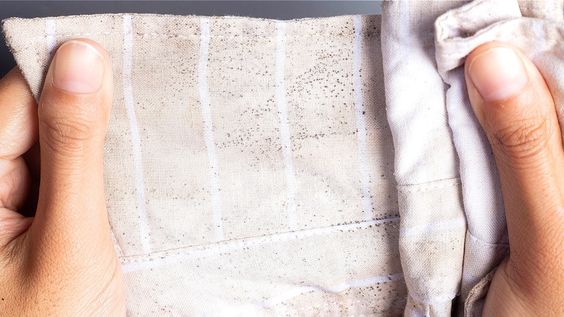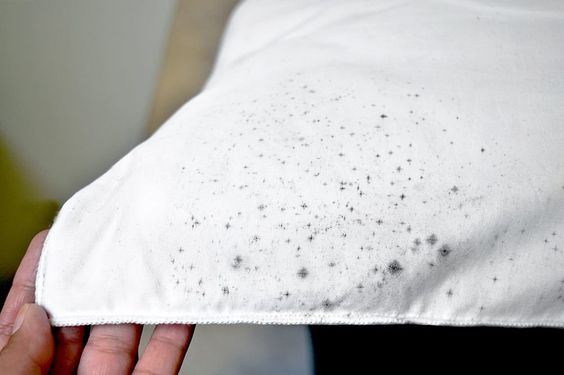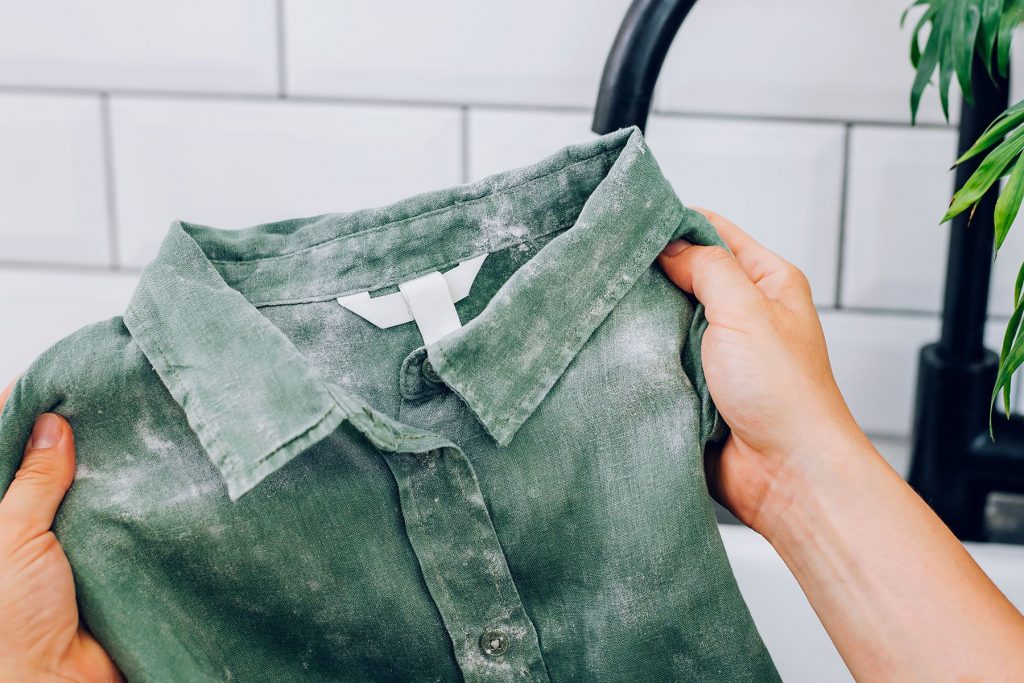
Let’s delve into the reasons behind mold on clothes and effective prevention methods:
1- Understanding Mold on Clothes
Mold is a type of fungus that thrives in moist, warm conditions.
Clothes become a perfect breeding ground for mold when they remain damp for too long. This could be due to forgotten wet bathing suits, laundry that wasn’t dried thoroughly, or other instances of moisture accumulation.
When tiny mold spores land on damp clothes, they multiply, leading to unsightly black, green, or white patches.
Different fabrics react differently to mold. Natural fibers like cotton and silk are more susceptible, while synthetic fibers like nylon and polyester are more resistant but not immune.
2- Assessing Mold Damage on Clothes
Mold doesn’t just stay on the surface; it can penetrate deep into the fabric, causing color distortion and structural damage.
Levels of mold damage on clothing:
Mild: Small patches or signs of mold without a strong moldy smell.

Moderate: Larger patches, extensive color fading, and an apparent moldy smell.

Severe: Mold covers most of the clothing, has a strong odor, and visibly distorts the fabric.

3– Preventing Mold on Clothes
Dry Clothes Thoroughly: Ensure clothes are completely dry before storing them.

Proper Ventilation: Store clothes in well-ventilated areas to prevent moisture buildup.

Avoid Overcrowding: Don’t overload the washer; give clothes enough space to dry during washing.

Regularly Clean Washing Machines: Periodically clean your washing machine with bleach to kill mold spores.

Low Humidity Storage: Store fabric in areas with low humidity to discourage mold growth.

Remember, prevention is key to maintaining mold-free clothes and ensuring they last longer! 🌿👚


